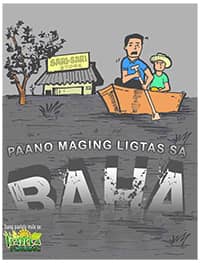DIKIT FESTIVAL

Known for being an agricultural municipality, the Municipality of Aurora annually celebrates its Dikit Festival every 28th to 30th of April. Dikit is an Ilokano term meaning glutinous rice. The festival is celebrated to showcase this mouth-watering delicacy and its by-products which are bibingka, muriecos, inangit, tupig, kalamay and tinudok, among others. Farmers in Aurora plant this glutinous rice served to guests during special occasions.
GAKIT FESTIVAL

The Gakit Festival is an annual festival held at the Cagayan River. Participants of the festival offer fruits, vegetables, poultry, and livestock as thanksgiving for their abundant bounty. The practice also reminds Angadanians of their tradition of planting crops and raising poultry in their own backyards for their own consumption.
The Gakit Festival also aims to show Angadanians that progress can only be achieved if they are united as one. A key detail of the Gakit Festival is the hand-made bamboo rafts which are used by the participants of the Festival. Each bamboo pole, if alone, has no value. It cannot float reliably on a river nor can it be used to transport anything. But if many bamboo poles are tied together as one, it can be made into a raft which can float and sail on calm or rough waters while transporting people and products.
GAWAGAWAYAN FESTIVAL

The City Fiesta and the Feast of Our lady of the Pillar are celebrated annually on April 10-13 and October 10-12 respectively. Since its conversion into a component city on March 30, 2001, the City Government started to celebrate its founding anniversary with the conduct of “Gawagaway-yan Festival aimed to preserve the rich cultural heritage of the city. It is highlighted by street dancing, beauty contest, trade fair, cultural parade, parlor games, free concert, band exhibition and other variety shows performed by local and Manila-based talents as well.
MANGI FESTIVAL

Aside from its exquisite church, one of the most enduring legacies of the Spanish colonial era lives on, quite literally in Tumauini, corn(Zea mays). It was one of the plants that came aboard the galleons and became one of the primary crops of the Philippines.
It is interesting to note that corn seems to have transcended being a mere crop in Tumauini. The late National Artist for Dance, Ramon Obusan traced the origins of a traditional dance inspired by the crop to Tumauini. Thus, a corn inspired festival seemed especially appropriate for Tumauini.
NUANG FESTIVAL

Despite the introduction of mechanized agriculture, the carabao (Bubalus Bubalis Carabanesis) remains a farmer’s indispensable helpmate in the fields. This beast of burden is honoured in the Nuang Festival of San Agustin as are the products the carabao enables farmers to produce. The town boasts of over 300 heads and farmers bring them over to the poblacion (town center) for the festival. To get the cattle there, they either guide the animals onto the ferry and keep them quiet for the short river crossing or find the shallowest point of the river, take off their clothes then lead them across. San Agustin the town supplies carabao milk to other towns where carabao milk candy is produced. The festival also serves as a venue for promoting other major products such as corn (Zea mays) and bananas (Musa paradisiaca L.).
PAGAY FESTIVAL
The "Pagay Festival" is held annually every September 28 in conjunction with the founding anniversary of the town of Alicia. It used to be called Alicia Town Festival, but was redefined and renamed to Pagay Festival in 2010 by Mayor Cecilia Claire N. Reyes. The festival aims to uphold the town's cultural identity and heritage and to promote the municipality’s primary agricultural product called, pagay (Ilocano word for rice)- the municipality’s major livelihood economy and trade mark.
The festival is widely participated by the community which features various competitions (e.g., rice planting, harvesting, and cooking among others), street dance showdown, beauty pageant (Mutya ng Alicia), battle of the bands, and exhibits. However, the Pagay Parade is the main highlight of the festival that features decorated carabaos, various rice crop floats, and people marching with colorful costumes which attracts tourists and visitors.
PATTARADDAY FESTIVAL

The biggest red-letter day on Santiago City’s social calendar: the Pattaradday Festival. For five days the 14 ethnic groups of the city flesh out the meaning of pattaradday, Ibanag for unity. Although it is held to mark the city’s founding anniversary and is likewise held in honor of the city’s patron, Saint James the Apostle.
SABUTAN FESTIVAL

In March, Palanan holds the Sabutan Festival. It is named after the local name for pandan (Pandanus tectorius) which is plentiful in the town. The people of Palanan are fine craftsmen who weave dyed and natural colored strips into a variety of bags, hats, and placemats, among other items that have both traditional and contemporary designs. For the festival, the sabutan products are not only sold, these are aslo used as a theme and are fashioned into costumes and décor.
- << Prev
- Next





























































